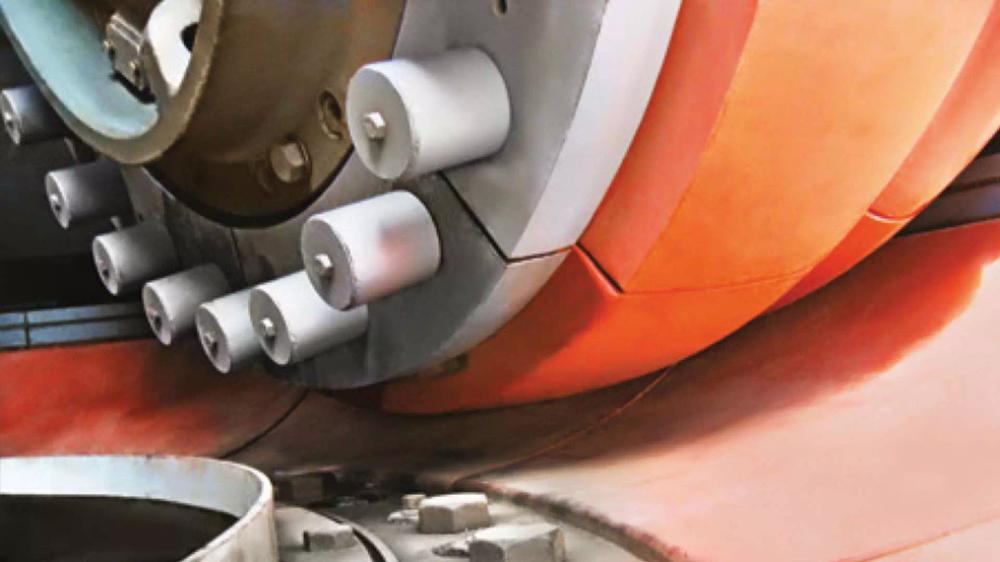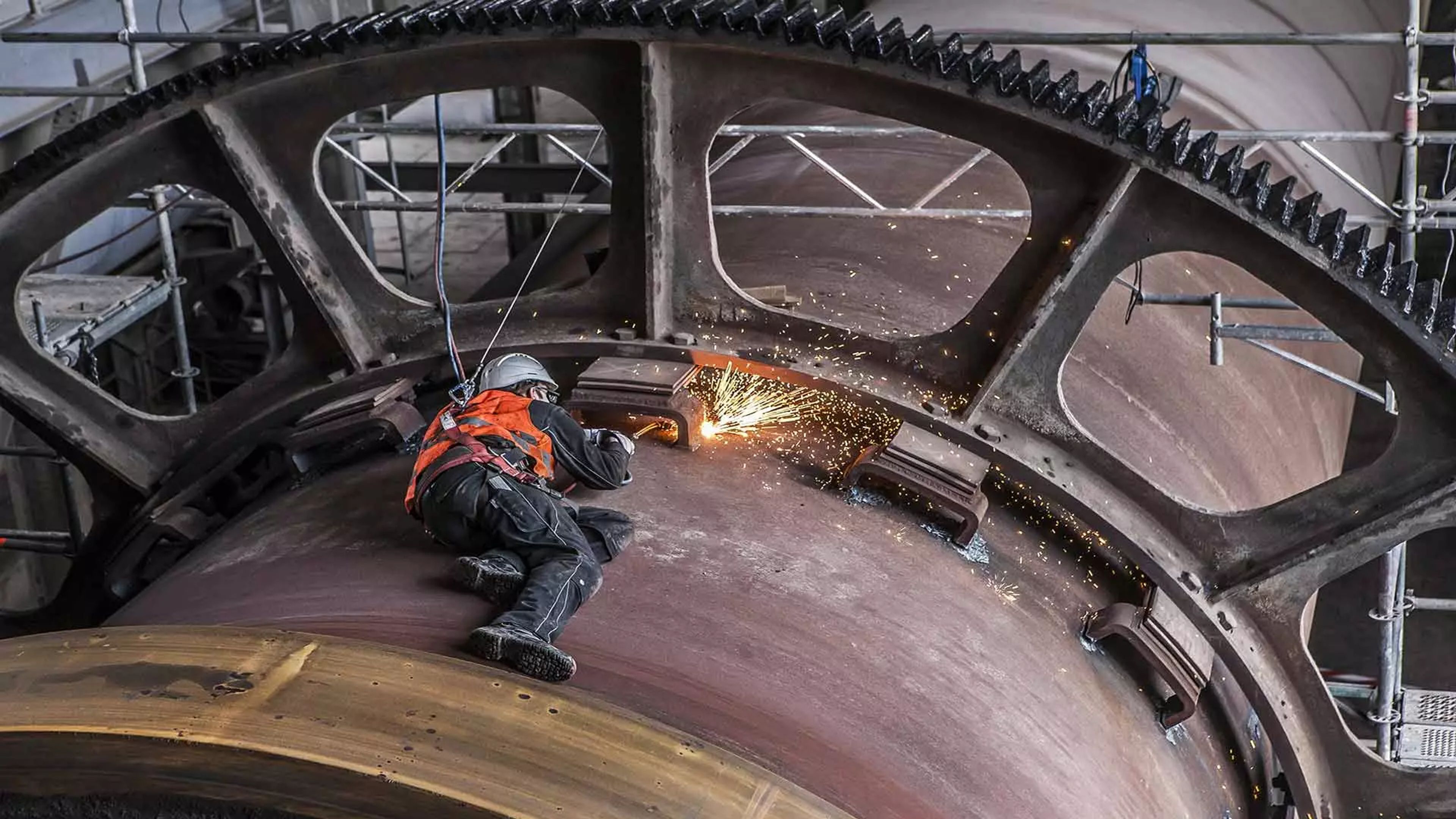article
Making gains with the OK™ mill
As cement producers continually seek reduced energy consumption and lower maintenance costs, two emerging trends are changing the face of cement production: the use of grinding stations that support variable feed materials and more widespread use of vertical roller mills (VRMs). Cement producers in India, Nepal and Bangladesh demonstrate the success of using VRMs.
A positive economic outlook and an influx of foreign investments have driven up cement production in India and South Asia in recent times. While this creates opportunities for major cement manufacturers, many of whom are importing clinker to meet production demands, the rising need for increased capacity requires larger and more flexible grinding solutions. Manufacturers are increasingly turning to the vertical roller mill (VRM ) as a highly productive solution to meet these increasing demands.
With VRMs already 30 to 50 percent more energy-efficient than conventional ball mills, the OK™ mill delivers even greater efficiencies. It uses around five-ten percent less power than other cement VRMs, which means producers can save millions of kilowatts each year.

The unique design elements in the roller and the table profile improve operating stability and reliability, resulting in a typical availability of 90 to 95 percent.
All-purpose flexibility
In 2016 and 2017, a total of 21 VRMs were sold in South Asia covering raw, coal and cement grinding applications. This demonstrates the industry’s shift in selecting an option that can be adapted to a plant's scale and needs. In Bangladesh, which is stepping up efforts to improve infrastructure bottlenecks by attracting foreign capital, four cement producers have ordered FLSmidth Cement’s OK mill for expansion of their production lines. Among these is Shah Cement, which has ordered the world’s largest OK mill. The OK 81-6 mill features six rollers and an 8.1-metre diameter grinding table, boasting an installed power of 11,600 KW.
The trend towards larger OK mills in Bangladesh is helping cement producers keep up with the boom in infrastructure development. But they are also benefitting from greater flexibility thanks to the OK mill’s ability to produce multiple types of blended cement in each unit.
Smaller in Nepal
In Nepal, cement producers typically have smaller capacity requirements and use a single mill to produce a range of OPC and slag-based products. Although the demand on production is not as high as in Bangladesh, the OK mill remains a suitable option, with many Nepal-based plants having ordered the mill recently. An example is Nepal Shalimar Cement, who will shortly be using the smallest OK mill available on the market.
Installations in India
Since the installation of an OK mill at India’s Orissa Cement Limited in Midnapore, the plant has consistently met or exceeded the performance guarantees regarding capacity, fineness and specific power consumption.
The mill at Orissa Cement was guaranteed to produce 212 tonnes per hour of PSC at 3800 cm2/gm Blaine without the use of grinding aid and with a mill area power consumption of 39.3 kWh/tonne. However, as shown in table 1, its operational performance has exceeded this guarantee. Furthermore, the plant’s OK mill has the flexibility to adjust to changes in the feed composition and granulometry; a critical element for Orissa Cement as the plant grinds both PSC and PPC.
In Karnataka, India, Orient Cement Limited has implemented two OK mills into its integrated greenfield cement plant. Here, the mills produce a guaranteed capacity of 250 tph @ 3000 Blaine for OPC and 265 tph @ 4000 Blaine for PPC, but as shown in table 2, both mills exceed performance guarantees.
SHYAM ASAWA - Head of Projects at Orient Cement Limited
India’s cement plants tend to require mid-capacity grinding mills and produce one cement type in each unit, therefore, having a flexible mill option is key in meeting the needs of cement plants in the region.
Portland slag cement grinding at Orissa Cement Ltd
Table 1: The OK™ Mill at Orissa Cement Limited has consistently met or exceeded performance guarantees.
Grinding performance at Orient Cement's two OK™ Mills
Portland pozzolana cement grinding
Ordinary portland cement grinding
A legacy of global productivity
The success of the OK™ Mill is not unique to the South Asia region. Similar performance results have been reported in Brazil, for example, where it is also common to produce multiple cement types with a high percentage of clinker substitution in a single mill. The success of the OK™ Mill throughout the world highlights the effectiveness of the vertical roller mill’s technology and its contribution to the cement production industry amidst the rapidly emerging trends of greater variation in feed materials and larger production capacity.

FLSmidth Cement OK™ raw and cement mill highlights
- Maximum parts commonality
- Flexibility to grind diverse materials and to change product within minutes
- 5-10% less power consumption than other cement VRMs
- High run factor - achieve up to 60-70% availability even with some rollers out of service
- 90-95% availability

_Raw_and_Cement_Mill.png?w=3840&q=80&auto=format)
ProCeramic_Wear_Segments.png?w=3840&q=80&auto=format)


.png?w=1080&q=80&auto=format)
.jpg?w=1080&q=80&auto=format)


